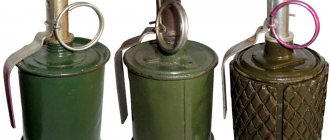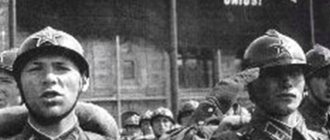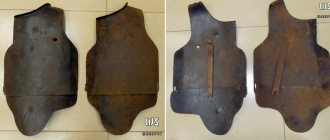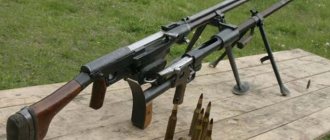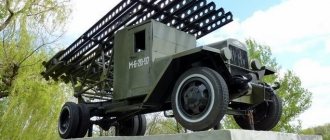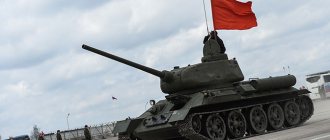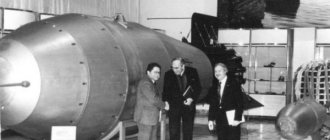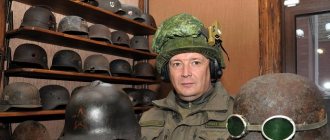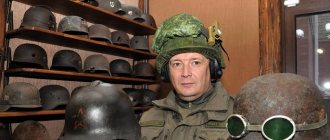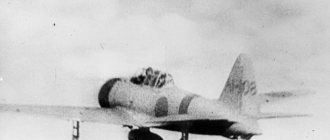“Weapon of Victory”: steel armor SN-42 and the famous Lysva helmets SSh-30. INFOGRAPHICS
To survive and win in battle, weapons alone are not enough - you need reliable equipment that will protect the fighter from enemy fire and ensure freedom of movement when handling weapons. During the Great Patriotic War, much attention was paid to soldiers' combat uniforms. The equipment of the Red Army soldiers was constantly being improved; even the Germans recognized its high quality and reliability. A clear confirmation of this is the fact that during the war, many Wehrmacht soldiers wore the helmets of killed Soviet soldiers. Why they did this and what elements of the Red Army’s combat equipment aroused the admiration of the fascists - read the material “MIR 24”.
The development of individual armor to protect Red Army soldiers from bullets and shell fragments began back in 1937–1938. In the summer of 1942, several samples were ready, which were successfully tested in combat and received a lot of positive feedback. As a result, the sample called CH-42 was recognized as the best. Subsequently, it was he who became the most famous bib of the Red Army during the Great Patriotic War.
The development of bibs was carried out by the Moscow Institute of Steel; their creation was led by Professor Vasily Semenovich Emelyanov. The first batch of prototypes was manufactured by July 21, 1942. With a thickness of 1.8–2 mm, the bib weighed 3.4–3.5 kg. The material for manufacturing was hot-rolled steel sheets of grade 35ХГС.
In parallel with the Moscow Institute of Steel, employees of Research Institute No. 13 and Research Institute No. 48 of the People's Commissariat of Tank Industry also worked on the development of new armor, and the work of the latter was not sanctioned by the Main Rocket and Artillery Directorate of the Red Army. As a result, pilot batches of three different samples were produced, each of which passed the necessary tests for bullet resistance. The final version of the “classic” CH-42 was approved on August 7, 1942.
The bulk of the bibs were sent to engineering assault brigades. The CH-42 withstood pistol and machine gun bullets and also protected against small fragments. There are even cases where armor saved a soldier from a direct shot at point-blank range with 9-mm pistol bullets, while the soldier did not receive any damage.
Another important advantage of the CH-42 was the smoothness and strength of the steel from which they were made: this made it possible to deflect rifle bullets and bayonet strikes - however, only with a tangential hit at a high angle. If we compare these bibs with modern means of protection, they correspond to class 2 body armor - both in weight and in terms of protective characteristics. Under the breastplate, soldiers usually wore a padded jacket with the sleeves torn off, which served as an additional shock absorber.
CH-42 steel breastplates have proven themselves in street battles, during assaults and hand-to-hand combat. They were used very widely during the Battle of Stalingrad. CH-42s were often called “shells,” and the engineer brigades equipped with them were nicknamed “armor infantry.”
Another important element of soldier protection during the war was helmets. The most popular “headdress” of the Red Army soldiers was the steel helmet of the 1940 model - SSh-40, or Lysvenskaya helmet.
The first mass-produced steel helmet in the Red Army was the SSh-36 model helmet. However, almost immediately after it was put into service, a lot of shortcomings were revealed, for example, brittle steel and weak bullet resistance in flexible places. By 1939, the helmet was modernized, and the shortcomings of the previous model were eliminated. The new helmets were called SSh-39 and were widely used during the Soviet-Finnish war. But this is where their main drawback was revealed: it turned out that wearing the SSh-39 with a warm headdress in winter was impossible, and the balaclava did not save soldiers from frostbite at low temperatures. The question arose about improving the helmet's under-tissue device. This is how the SSh-40 helmet was born.
Before the start of the Great Patriotic War, these helmets were tested at the Shchurovsky training ground near Moscow. The leading expert on armored helmets was Lieutenant Colonel Vasily Orlov. During the war years, SSH-40 helmets were produced by metallurgical plants and the Lysvensky Metallurgical Plant (hence the name Lysvenskaya helmet).
It is noteworthy that during the war these helmets could be found not only on Soviet, but also on German soldiers. The Nazis tried to get a trophy helmet at the first opportunity, and quickly got rid of theirs. This was explained very simply. At the very beginning of World War II, Wehrmacht soldiers wore Stahlhelm M35 and M40 helmets, which were in no way inferior to the protective equipment of their rivals. However, in 1942 they were replaced by a new model - the M42. It turned out to be extremely unsuccessful: the helmets were made of softer steel and did not protect the head at all from bullets or shrapnel. As a result, the Nazis had no choice but to obtain the helmets of Soviet soldiers to protect themselves. The Soviet SSh-40 helmets could not be compared with their German counterpart: they were distinguished by their highest strength. In such helmets, soldiers were not afraid of either shrapnel or bullets fired from a submachine gun, and sometimes even from a rifle. Perhaps the only disadvantage of the helmets was their large mass - each helmet weighed 800 g (without a liner). However, Soviet soldiers and commanders believed that safety was more important than convenience, which their opponents agreed with.
Read more about what the main protective equipment of the Soviet army looked like during the Great Patriotic War in our infographics.
CH 40.30
Reinforced concrete solid driven piles SN 40.30 with a solid square section of 300x300 mm with prestressed reinforcement have significant advantages compared to both other building materials and other known methods of foundation preparation:- can be used in places with unstable soil;
- have great resistance and resistance to any influences - mechanical, temperature, chemical;
- durability of piles while maintaining original characteristics;
- high heat resistance and water resistance;
- high load-bearing capacity;
- high technology in production;
- ease of installation - driving piles does not require draining the pit and preparing the soil;
- large immersion depth, eliminating the possibility of shifting and collapse of the foundation.
Solid driven piles CH 40.30 with a solid square section of 300x300 mm with prestressing reinforcement are a column with pointed ends, reinforced with high-strength steel along the entire length of the rod. These products are reinforced with welded reinforcement cages, the head of the piles is reinforced with meshes. Pile foundations have a grillage that rests directly on the pile heads and is designed to transfer loads from the structures of a building or structure.
Solid driven piles SN 40.30 with a solid square section of 300x300 mm with prestressed reinforcement are manufactured in accordance with the standards specified in GOST 19804-2012 “Prefabricated reinforced concrete piles. General technical conditions" from heavy or fine-grained concrete with a compressive strength class of B15 or more. Fractionated crushed stone from natural stone or gravel is used as a coarse aggregate for concrete piles, and the fraction size should be no more than 40 mm. The normalized transfer strength of concrete must be at least 70% of the strength corresponding to the class of concrete in terms of compressive strength. The grades of concrete piles for frost resistance and water resistance are assigned in the range from F50 and W4 to F600 and W8, respectively, depending on the construction area, the level of responsibility of the building or structure, the operating mode of the piles and the design temperatures of the outside air and surrounding soil.
Solid driven reinforced concrete piles SN 40.30 with a solid square section of 300x300 mm with prestressing reinforcement are reinforced with prestressed reinforcement from hot-rolled and thermomechanically strengthened rod steel of classes A600 (A-IV) and A800 (A-V) according to GOST 5781 and GOST 10884, steel reinforcing ropes 1 x7 according to GOST 13840 and high-strength wire of a periodic profile with a class from Вр1200 (Вр-II) according to GOST 7348. Hot-rolled rod reinforcement of a periodic profile with classes A300 (А-II) and А400 (А-III) according to GOST 5781 and thermomechanically strengthened is used as non-prestressing reinforcement classes A400 (A-III) and A600 (A-IV) according to GOST 10884. Cold-drawn wire made of low-carbon steel class B500 (B-I, BP-I) according to GOST 6727 is used as structural reinforcement (spirals, mesh, clamps) rod hot-rolled smooth steel of class A240 (A-I) in accordance with GOST 5781. It is allowed to use reinforcing steel of class A240 (A-I) in accordance with GOST 5781 as non-prestressed longitudinal reinforcement.
Reinforced concrete solid driven piles SN 40.30 with a solid square section of 300x300 mm with prestressing reinforcement are highly responsible products, therefore they are subject to fairly strict requirements for the quality of both the surface and geometric parameters. The values of the maximum deviations of the geometric parameters of piles should not exceed: along the length of the pile - 25-50 mm, across the cross-sectional size (diameter) - 20-66 mm. The deviation from the straightness of the profile of the side faces of the pile shaft along the entire length should not be more than 25-30 mm. The deviation from the perpendicularity of the end plane should not exceed 0.01 of the side size of the cross-section of the product.
Strict requirements are also imposed on the working fittings of products. The distance from the outer transverse rod to the end of the frame and the distance from the outer mesh to the end of the reinforced concrete pile, solid driven CH 40.30 with a solid square section of 300x300 mm with prestressing reinforcement should not exceed 10 mm. The pitch of the spiral, clamps and mesh should be no more than 10 mm for pitch values up to 50 mm inclusive, 15 mm for pitches of 50-100 mm and 25 mm for pitches of more than 100 mm. The values of actual deviations in the thickness of the protective layer of concrete to the longitudinal reinforcement should not exceed +15 -5 mm.
Exposure of working and structural reinforcement is not allowed on the surface of the piles. The ends of the prestressing reinforcement after tension release must be cut flush with the end surface of the reinforced concrete pile. Requirements for the quality of concrete surfaces and the appearance of piles (including the width of the opening of surface technological cracks) are determined by GOST 13015.0. In this case, the dimensions of cavities, local depressions on the concrete surface and concrete edges of pile ribs should not exceed: diameter or largest size of the cavity - 20 mm, cavity depth - 10 mm, depth of concrete edges - 20 mm. The height of the beads on the end surface of the piles should not be more than 5 mm.
Reinforced concrete piles, solid driven CH 40.30, with a solid square section of 300x300 mm, with prestressing reinforcement, are stored in stacks in horizontal rows with the same orientation of the ends of the piles. Between the horizontal rows of piles during storage and transportation, spacers must be laid, located next to the lifting loops, or, in the absence of loops, in places provided for gripping the piles during their transportation. The height of a stack of piles should not exceed the width of the stack by more than twice.
Loading and unloading of reinforced concrete piles should be done using lifting loops. Lifting piles onto a pile driver should be done with a sling attached to the pile at a fixing pin or at the top lifting loop, if this is allowed by the requirements of the working drawings for solid driven piles CH 40.30 with a solid square section of 300x300 mm with prestressed reinforcement of a specific type, with slinging directly behind the lifting loop or pin is prohibited. The lifting of piles for immersion into the ground is carried out with a cable threaded into a hole formed by a metal sleeve and located at a distance of 250 mm from the upper end of the product.
You can order reinforced concrete piles, as well as consult with our specialists and select the required designs of reinforced concrete products. In our sales department you can find out in advance and clarify the price of reinforced concrete piles and calculate the total cost of the order. You can buy solid driven piles SN 40.30 with a solid square section of 300x300 mm with prestressed reinforcement and consult on general issues of purchase and delivery by calling the BLOK Group company: St. Petersburg , Moscow: (495) 646-38-32 , Krasnodar: ( 861) 279-36-00 . Company operating hours: Mon-Fri from 9-00 to 18-00. The company GC BLOK delivers products throughout Russia directly to the customer’s site or to the construction site, if the infrastructure allows.
For questions about pressing piles or carrying out a full range of zero-cycle construction work, please call (812) 309-22-09
